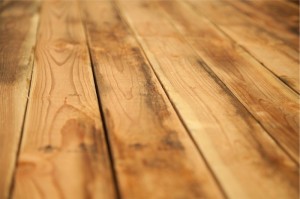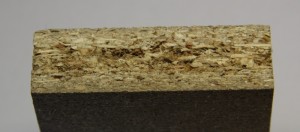What Type of Wood is My Hardwood Floor | Signature Custom Flooring
Posted by Aaron Schaalma
 Hardwood flooring has been the most universally desirable choice for floors almost as long as floors have been a thing. The variety of tones, textures and levels of hardness combined with the wide availability of lumber in North America have made hardwood flooring a choice many homebuyers and builders don’t even need to think about when selecting a floor.
In addition to its objective qualities, hardwood flooring can elicit a range of emotions as well. An enchanting white oak makes you feel open and calm about your living space. A luxurious black walnut gives you a feeling of refinement and elegance that few other floors can match. Or maybe you want the warmth and coziness that a caramel bamboo provides.
Many homebuyers factor these feelings the house gives them into their decision to purchase or not. While you may be able to explain in vivid detail how the flooring makes you feel, the type of wood that actually makes up your distinguished living room, or your airy kitchen may not be as easy to explain.
Hardwood flooring has been the most universally desirable choice for floors almost as long as floors have been a thing. The variety of tones, textures and levels of hardness combined with the wide availability of lumber in North America have made hardwood flooring a choice many homebuyers and builders don’t even need to think about when selecting a floor.
In addition to its objective qualities, hardwood flooring can elicit a range of emotions as well. An enchanting white oak makes you feel open and calm about your living space. A luxurious black walnut gives you a feeling of refinement and elegance that few other floors can match. Or maybe you want the warmth and coziness that a caramel bamboo provides.
Many homebuyers factor these feelings the house gives them into their decision to purchase or not. While you may be able to explain in vivid detail how the flooring makes you feel, the type of wood that actually makes up your distinguished living room, or your airy kitchen may not be as easy to explain.Visual identification
Unlike roofing, counter tops or architectural and design elements, you can’t really tell what kind of wood you have just by looking at it. At least not without a few caveats. First and foremost, you must have a sample of the wood that allows you to see the end of the planks. Without such a sample, it’s going to be very difficult and impossible even to identify the type of wood you have. The end of the plank is the unfished area that is made visible when a plank is cut laterally.Solid wood looks like real wood
Because the visible portion of the wood floor on top of the planks can be finished and stained in a variety of ways, the real wood is going to be what you see on the end of the planks. If you can spot visible end-grain along this edge (that is natural-looking wood grain composed of rings and consistent running wood lines). End-grain visible on Black Locust Wood Species
End-grain visible on Black Locust Wood Species
 Particle or composite board
You can see in the images above that the bottom image looks very familiar to anybody who has ever put together a piece of Ikea or Sauder furniture. It’s that messy, sawdusty wood that feels like it could fall apart if not held together by the thin veneers. It’s not a terrible choice for wood flooring, but it is not solid wood.
If the wood appears real, it may still have a veneer on it. The best way to identify veneers is to keep an eye out for repeated patterns in the wood.
Particle or composite board
You can see in the images above that the bottom image looks very familiar to anybody who has ever put together a piece of Ikea or Sauder furniture. It’s that messy, sawdusty wood that feels like it could fall apart if not held together by the thin veneers. It’s not a terrible choice for wood flooring, but it is not solid wood.
If the wood appears real, it may still have a veneer on it. The best way to identify veneers is to keep an eye out for repeated patterns in the wood.Okay, so I have a solid wood sample. What’s next?
Next is figuring out the color of the wood and the grain. If your wood sample and flooring was stained, you may have to plane the sample in order to see the color of the grain. Likewise, if the wood has a patina on it (or natural discoloration that takes place as a wood surface ages), you will need to sand the sample down and see the way the wood appears. Because a number of different woods may have similar colors, discovering the color of the wood will not provide an immediate answer, but it will help you narrow it down. Certain wood colors like black or red are an exception, being almost immediately indicative of uniquely colored solid wood varieties (ebony and padauk respectively - though you’d probably know if you had one of these floors as it would have added a couple of ten thousands to the price of your home).It’s all about finding patterns
 So color alone is not likely to help us identify wood. The other key factor is looking at the grain on the wood’s surface. Just like the supposedly vain pursuit of trying to figure out the secret to the stock market, we’re looking for patterns here (we’ll get it someday)!
Oak is one of the most common hardwood flooring materials. It’s durable, sufficiently hard and widely available. Oak is almost instant recognizable for it’s open and porous grain texture. This large open grain texture has made oak a preferred choice for unfinished rustic appearances.
So color alone is not likely to help us identify wood. The other key factor is looking at the grain on the wood’s surface. Just like the supposedly vain pursuit of trying to figure out the secret to the stock market, we’re looking for patterns here (we’ll get it someday)!
Oak is one of the most common hardwood flooring materials. It’s durable, sufficiently hard and widely available. Oak is almost instant recognizable for it’s open and porous grain texture. This large open grain texture has made oak a preferred choice for unfinished rustic appearances.
 If the wood grain is smooth and lacks the rough texture, it’s probably a softer wood. Certain varieties of wood like lacewood or sycamore will be almost instantly recognizable by their grain.
If the wood grain is smooth and lacks the rough texture, it’s probably a softer wood. Certain varieties of wood like lacewood or sycamore will be almost instantly recognizable by their grain.

How was the wood cut?
Depending on the wood species and lumber producer, wood is sawn in different ways. The two most popular ways to saw and cut a plank of wood are plain and quarter sawing. Plainsawn wood is cut tangentially to the raw lumber whereas quartersawn is cut radially. Illustrated below, the two methods can make the same sample of wood look very different. A - Quartersawn (notice the lateral graining) B - Plainsawn (notice the rings and running lines).
Knowing how to spot the difference will prevent misidentification.
A - Quartersawn (notice the lateral graining) B - Plainsawn (notice the rings and running lines).
Knowing how to spot the difference will prevent misidentification.


